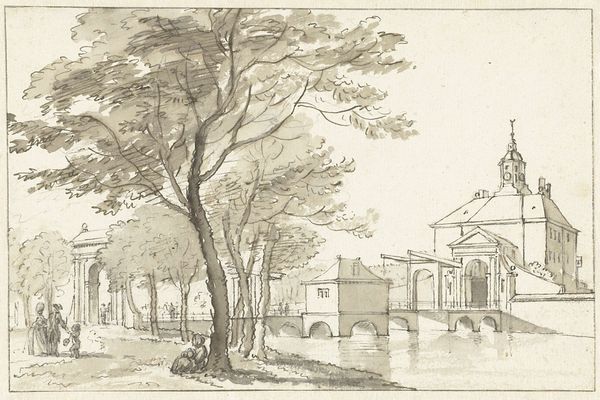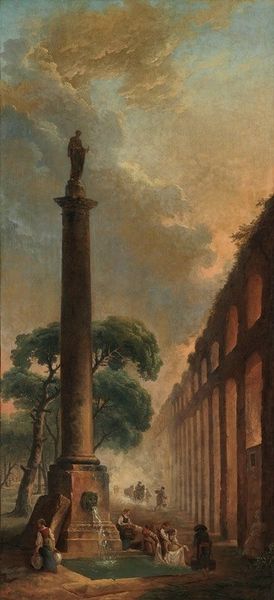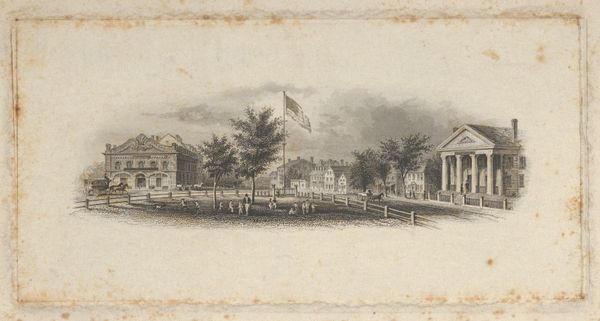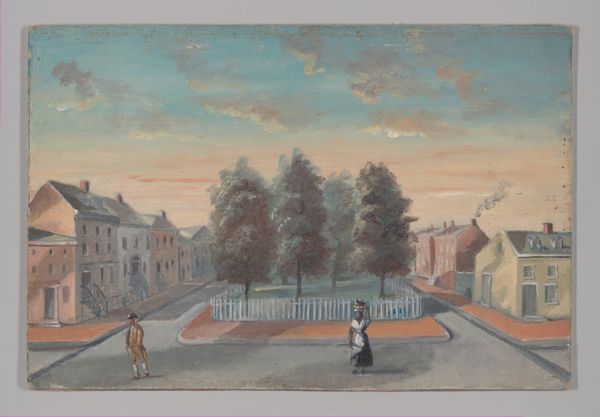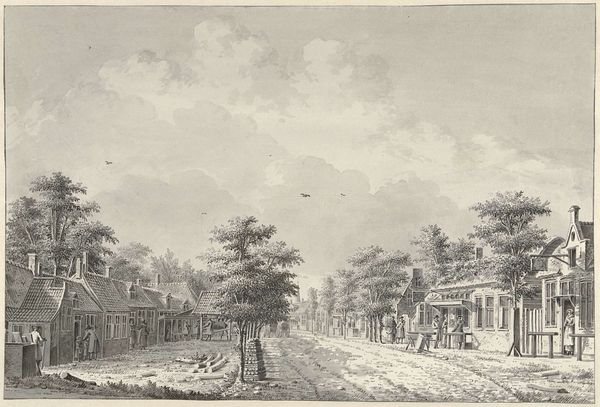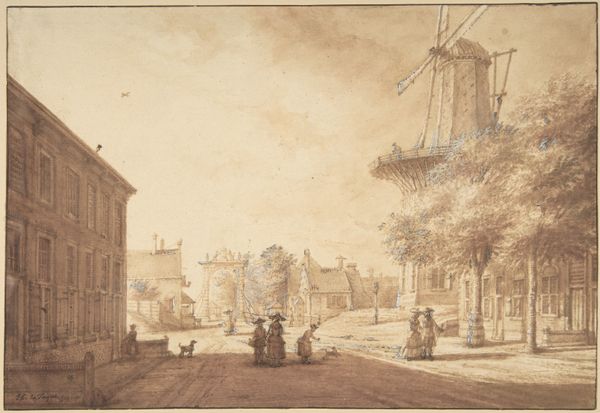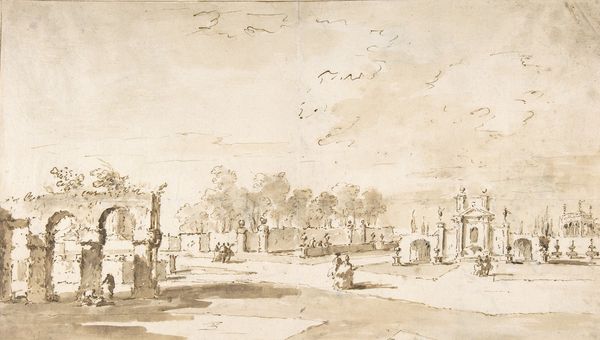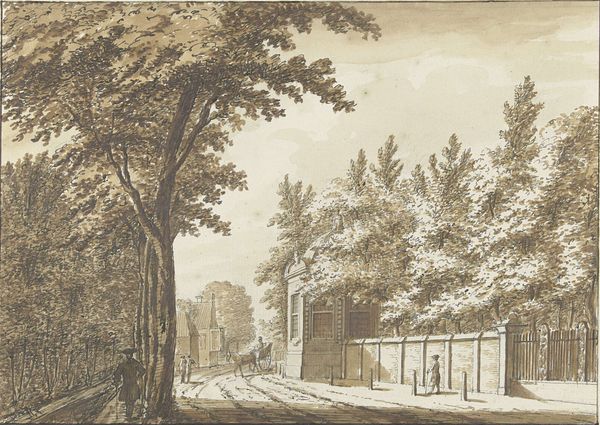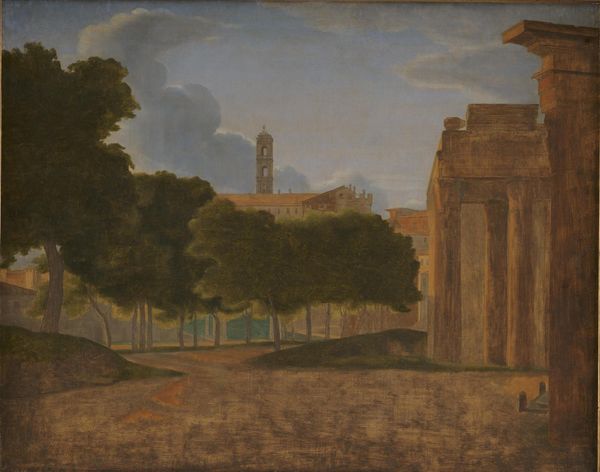
Dimensions: support: 546 x 889 mm frame: 790 x 1135 x 70 mm
Copyright: CC-BY-NC-ND 4.0 DEED, Photo: Tate
Curator: This is an 18th-century painting by an artist from the British School, titled "Hyde Park Corner." Editor: There's something desolate about it, isn’t there? The symmetrical composition is almost unsettling, like a stage set waiting for actors who never arrive. Curator: It's true; the emptiness underscores the painting's focus on architectural structures. The neoclassical buildings and the symmetrical placement of the gatehouses emphasize order and control. We can consider how that aesthetic reflects the values of the British ruling class at that time. Editor: I notice a tension. The street lamps, for instance, seem like beacons of civic progress. But they're presented in such a way that feels austere, even a little bit foreboding. The muted palette enhances that mood. Curator: I agree, those lamps serve as markers of civic ambition, yet the painting's overall tone suggests a society grappling with its own identity, caught between aspirations and constraints. Editor: So, the symbols are less about celebration and more about the complexities of power? Curator: Precisely. It's a reminder that even seemingly straightforward depictions of place can unveil profound social and political layers. Editor: Looking closer, this vista really encapsulates the era's conflicting ideals. Curator: Indeed. Examining these works critically helps us to question and reframe historical narratives.
